Propagate Comfrey From Root Cuttings For An Easy Way To Grow New Plants

PERENNIALS > COMFREY > CUTTINGS

Elizabeth is a Permaculture Garden Designer, Sustainability Consultant and Professional Writer, working as an advocate for positive change. She graduated from the University of St. Andrews with an MA in English and Philosophy and obtained a Diploma in Applied Permaculture Design from the Permaculture Association.
Reviewed By DAN ORI

Dan has over 27 years’ under his belt caring for plants and gardens. Working as a Horticultural Instructor and Consultant, he draws on a diverse range of experience that includes working as a Head Gardener, Tree Surgeon, Garden Centre Trouble Shooter, and writer of academic papers. Dan has a Level 3 Diploma in Horticulture and is currently a candidate for the RHS’s most prestigious award – The Master of Horticulture.
IN THIS GUIDE
COMFREY GUIDES
Comfrey vs Borage
Fertiliser
– For Tomatoes
Growing From Seed
Harvesting
Root Cuttings
Varieties
Comfrey is an extremely easy plant to grow and propagate.
This is great news because it really is a great friend to gardeners.
There are several different types of comfreys you can grow, but Russian comfrey is probably my favourite because it is sterile, so won’t spread out of bounds, and is great for maintaining fertility.
However, you cannot grow this type from seed – but it can, like other comfreys, be propagated very easily by division, and from crown offsets and root cuttings.
Once you have one comfrey plant growing in your garden, you can quickly and easily get many more to plant elsewhere in your garden.

To propagate comfrey from cuttings:
- Select a mature comfrey plant, or purchase crown or root offsets.
- Prepare pots or growing areas in which to place the root cuttings.
- If propagating an existing plant, lift and divide the plant to acquire your cuttings.
- Plant or pot up the root cuttings.
- Plant out cuttings to their permanent growing positions as soon as new leaves emerge.
This is a job that is best undertaken in autumn or early winter or early spring.
Read on for a more in-depth explanation of this process.
| Difficulty | Easy |
| Equipment Required | Mature comfrey or offsets, spade or fork, knife, gloves, pots |
| When To Take Cuttings | Spring, autumn, early winter |
1) Select A Plant For Cuttings
The first step is to find your cuttings.
Of course, you might obtain cuttings from an existing comfrey plant in your garden, but you might also purchase cuttings.
If you purchase cuttings, you will find that you can purchase either crown offsets or root offsets.
Crown offsets are cuttings from the top part of the root system, with the growing tip attached.
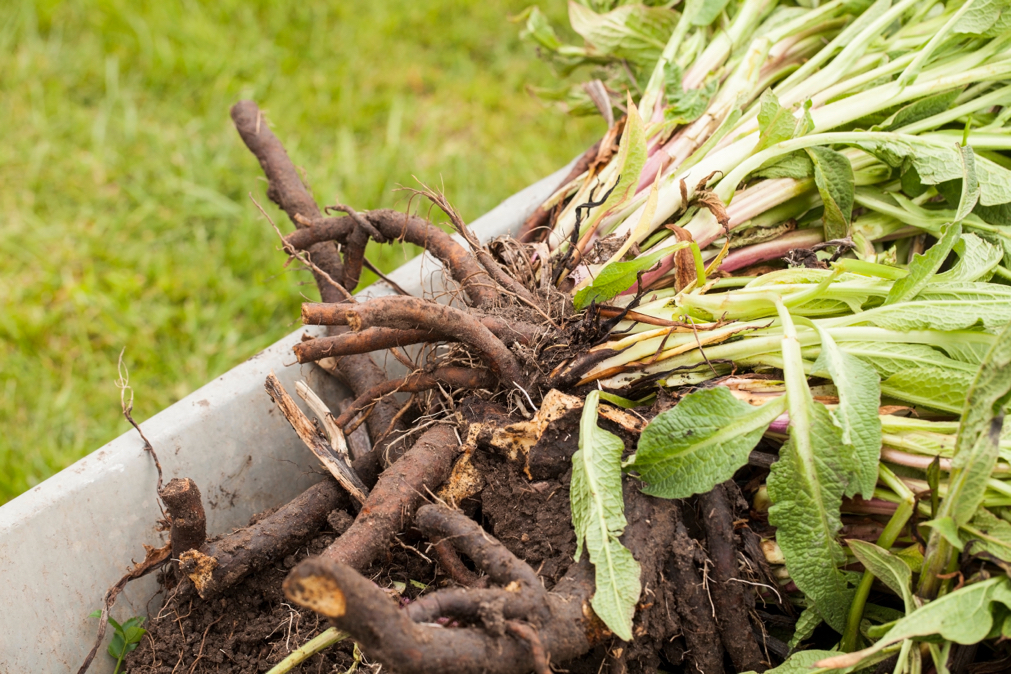
These will grow and establish more quickly.
Root offsets are small portions of root without the growing tip.
Comfrey is so remarkably easy to propagate because it will regrow pretty easily even from a small section of root.
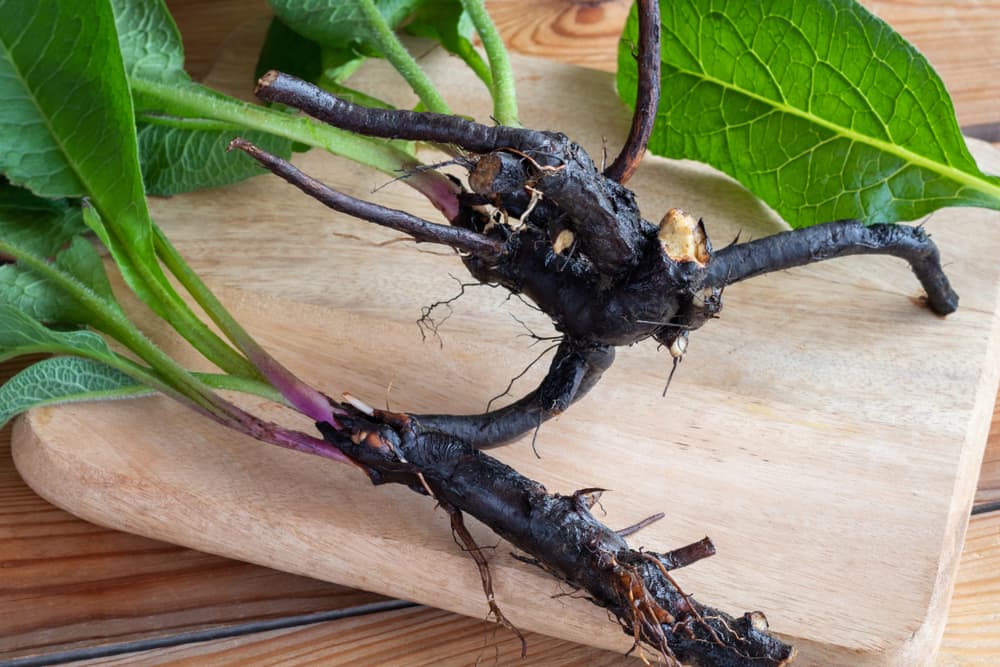
This is one of the reasons why it can be so difficult to eradicate from an area once it starts to grow there.
2) Prepare Pots
Comfrey cuttings can quite often establish successfully when you place them straight in the ground, but if you place them in the ground, do remember that you should choose the spot carefully, as it will be very difficult to remove the plants once they establish.
Comfrey needs a site with moist to damp soil, in full sun or partial shade.
If the soil is not ideal where you live, it can be a good idea to choose pots to start out your cuttings.
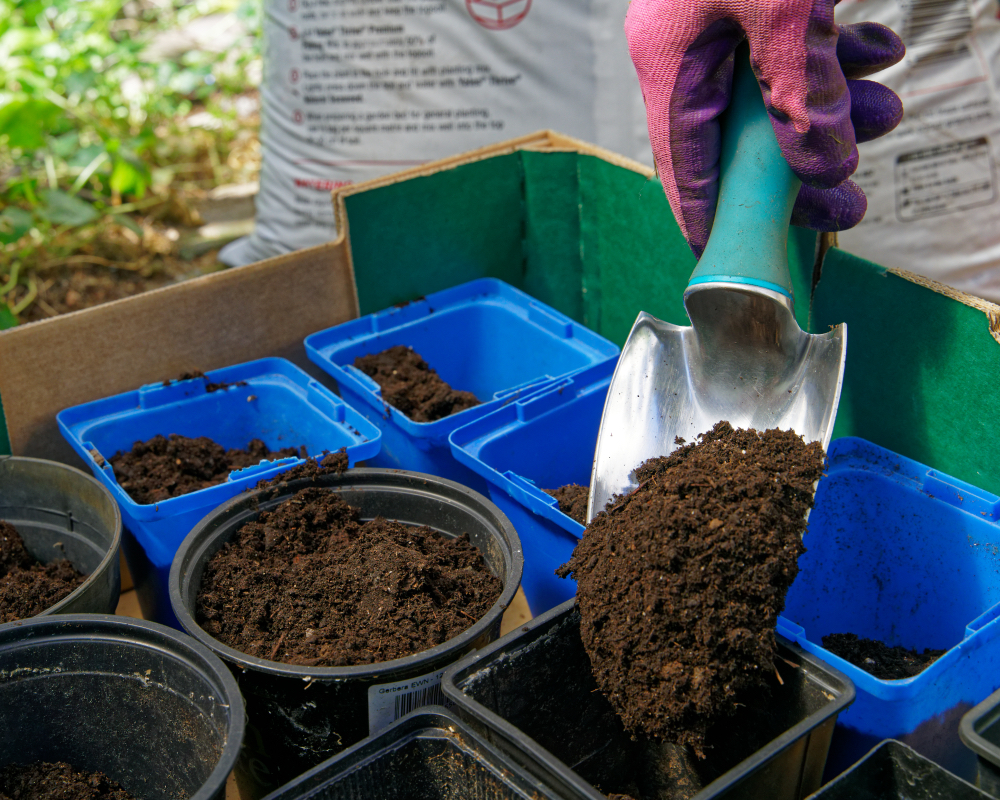
Small pots are fine, as long as you are prompt in planting out your cuttings as soon as new growth emerges and new leaves form.
If planting in pots, fill these with any reasonably moist multipurpose peat-free potting mix or a homemade equivalent.
If necessary, when planting outside in the ground, enrich the growing area before planting with plenty of organic matter.
3) Lift And Divide Existing Plant
Taking cuttings from an existing plant can be done as part of the process of lifting and dividing.
Comfrey plants can be lifted and divided in spring, autumn, or early winter.
This can help reduce the size of an existing plant, while also providing more plants.
You can simply lift and replant a portion of the existing comfrey, or you can also divide the portion up into smaller crown offsets and root cuttings.
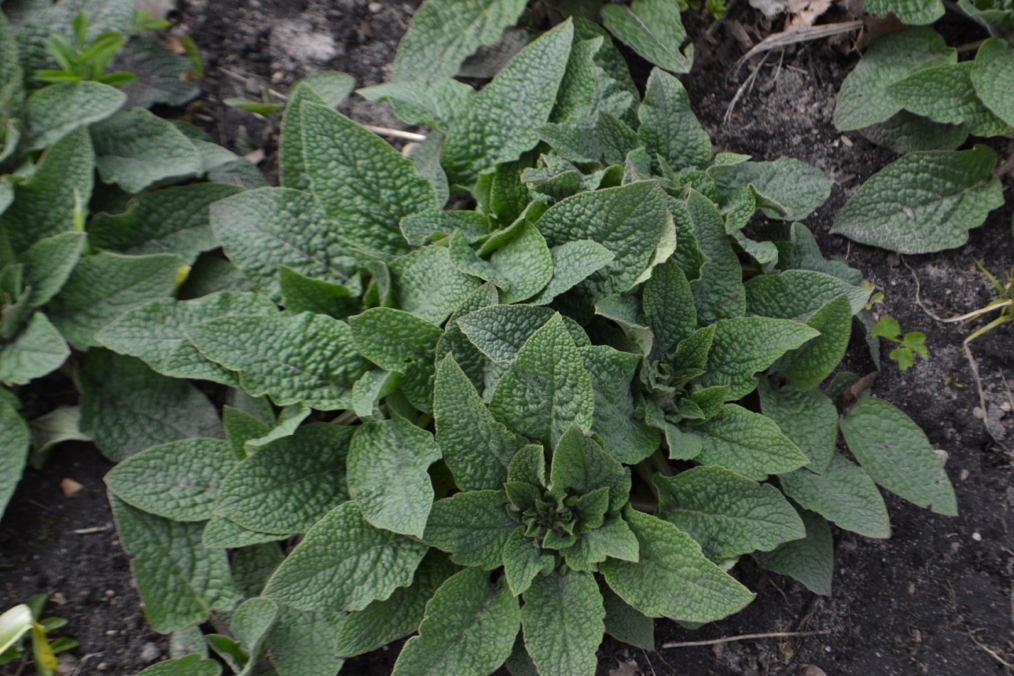
First, take a spade and slice down through the heart of the clump of comfrey, taking off as large a portion as you require and easing it from the soil.
Firm the soil back in around the remaining plant; it will be fully recovered and back to how it was in no time at all.
Take the portion you have lifted and shake off excess soil.
If necessary, rinse the roots in cold water so that you can see things more clearly.
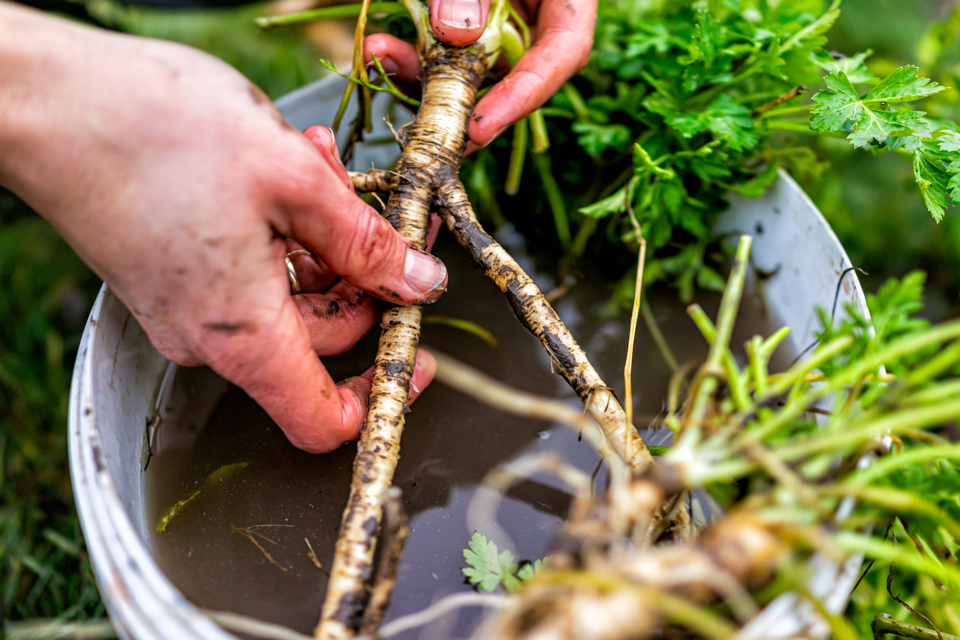
You can then begin the process of dividing this portion of the mature plant into cuttings, or offsets.
Cut across the roots using a sharp, clean knife around 5cm below the previous ground level.
The area above this cut will become your crown offsets.
Remove all the leaves remaining on this portion, leaving just 1cm or so of stem.
The area below this cut can be used to create your root cuttings.
Divide the crown using your knife into smaller sections.
As long as each one has a growing tip and some root, it should get off to a good start and put on new growth more quickly than the root offsets.
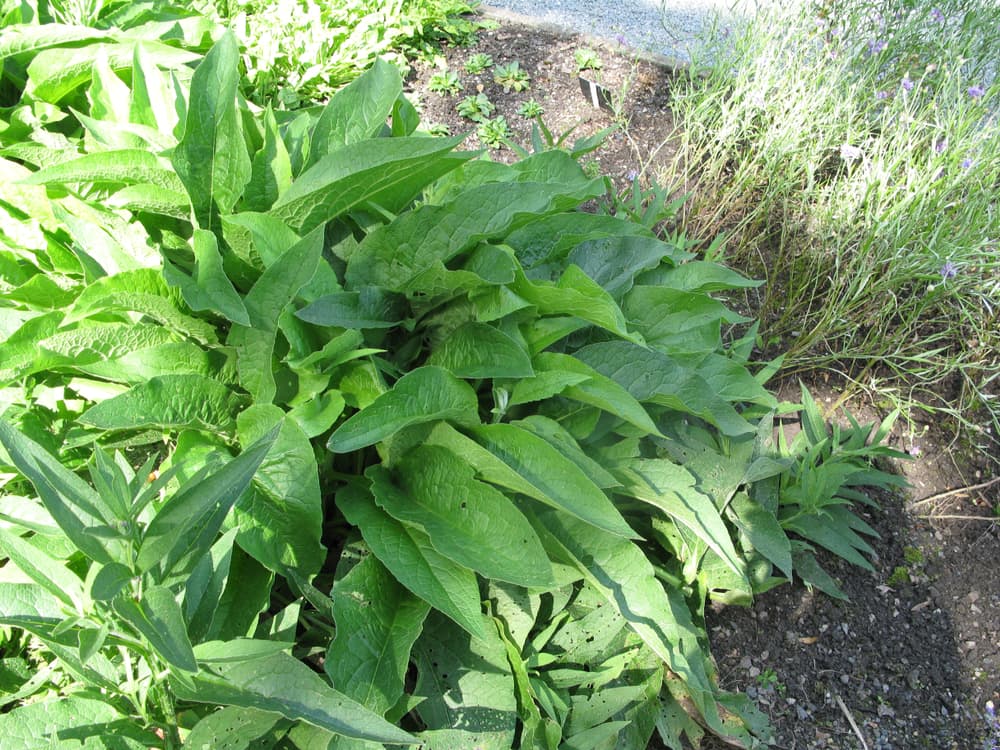
The remaining root sections from below the initial cut can be cut into short sections of the root, each around 5cm long.
Each of these cuttings should also eventually grow into a new comfrey plant.
You will soon see that a great many cuttings can be obtained from even a relatively small portion of an existing comfrey plant.
“To divide my plants, I take large cuttings with an old pruning saw or bread knife, use a sharp garden knife to cut these into 5-10cm sections,” shares Dan Ori, a Horticulturist Instructor with 27 years of experience.
“Unlike a wood (top growth) cutting, where you would have an angled cut at the top of the cutting material, with root cuttings I recommend having an angled cut at the thin end nearest the root tip of the cutting.
“This will help you push it into compost when you plant it the correct way up with the pointy-end down.”
4) Pot Up
Place crown offsets in the soil or growing medium at the level that they were previously at in the soil, with the growing tip just protruding.
Root cuttings should be planted on their sides around 2.5cm below the surface of the soil or growing medium.
5) Plant Out
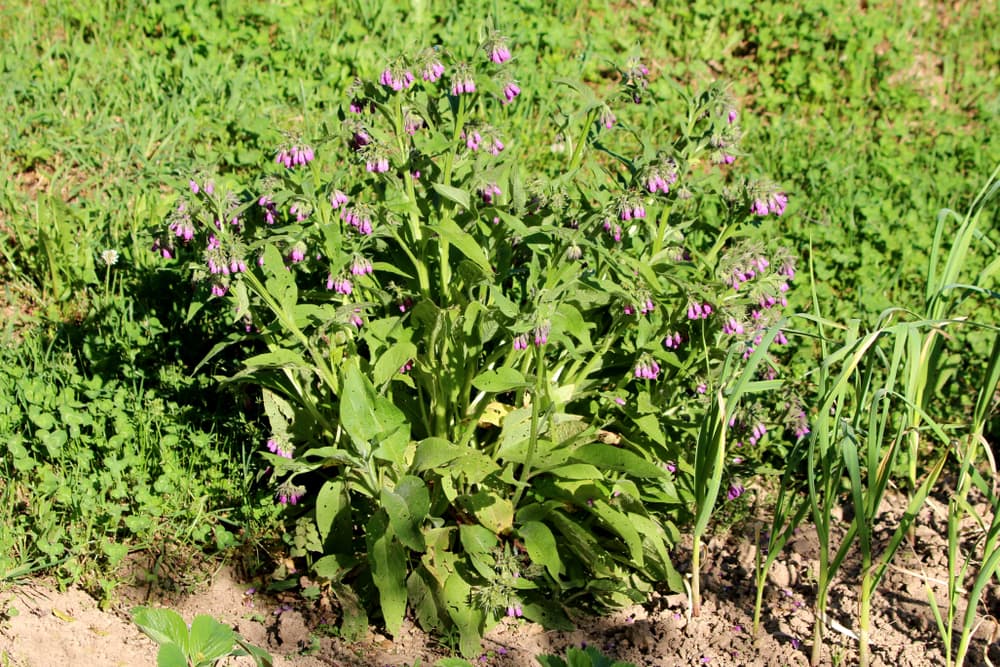
You can plant out your offsets in the ground right away, or keep them in a greenhouse or other undercover area until the following spring before you plant them into their final growing positions.
